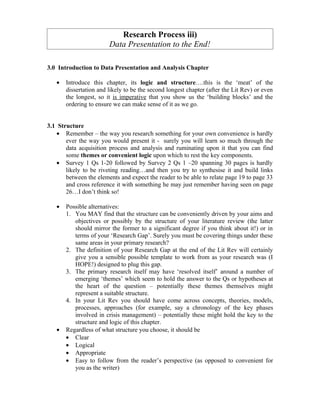This document provides guidance on structuring and presenting data in the dissertation process. It discusses:
1. The importance of structuring the data presentation chapter logically based on themes, objectives, or concepts from the literature review rather than just presenting all raw data.
2. The need to discuss sampling methods, validity, and reliability to establish credibility before presenting any findings.
3. Tips for effective data presentation including using tables, figures, and narrative analysis to interpret results while maintaining objectivity and considering multiple explanations.
4. The chapter should draw specific conclusions from each data cluster or theme but stop short of overall conclusions, leaving synthesis for the end. Proper referencing is also emphasized.





